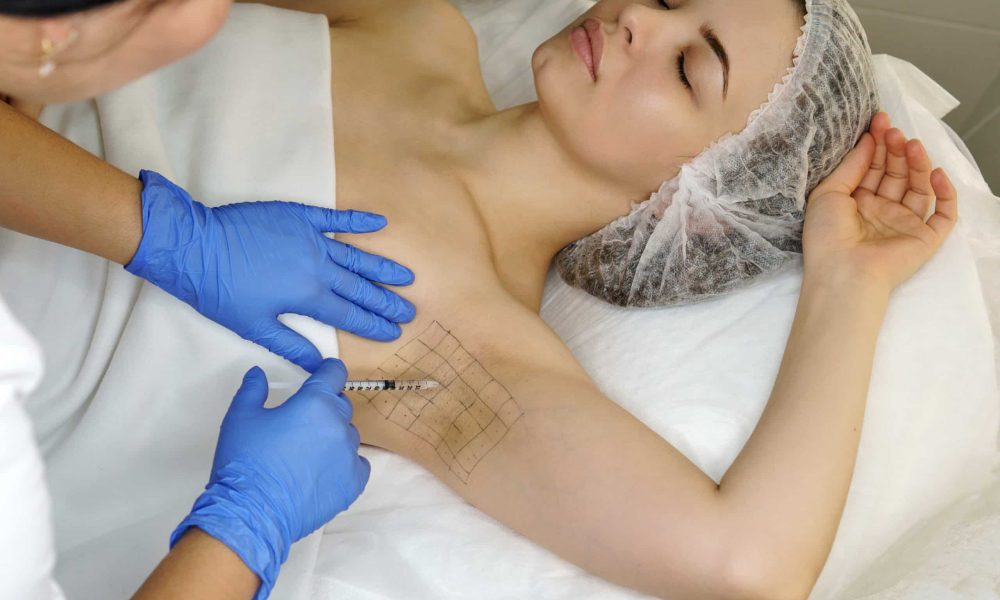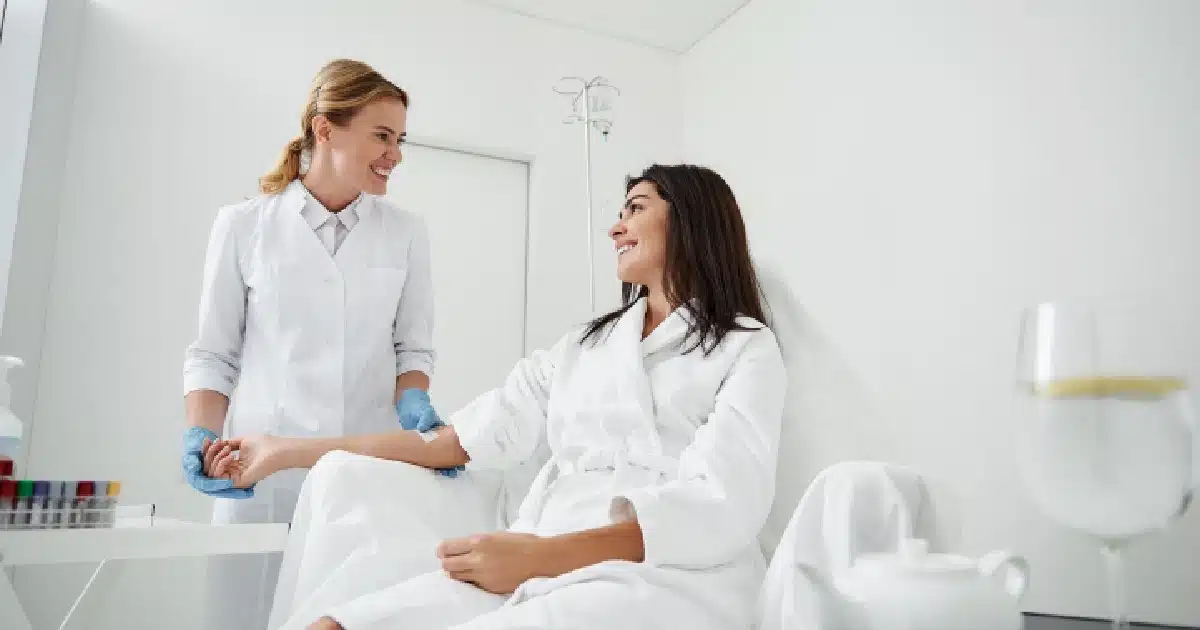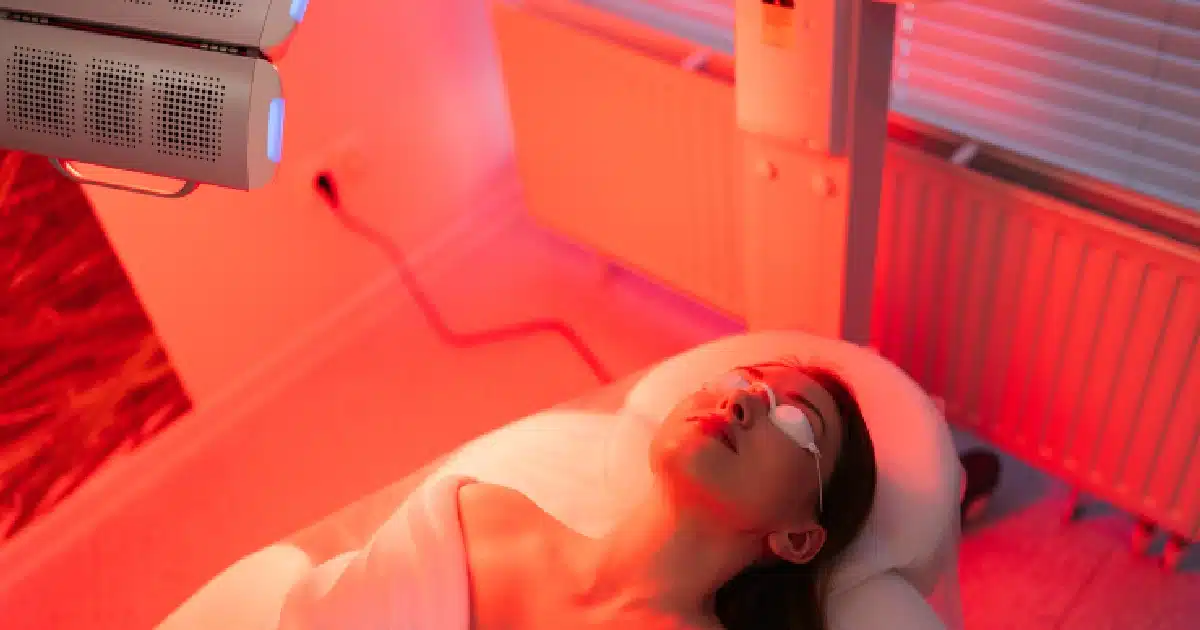It’s natural to sweat. In reality, sweating is necessary for humans to control their body temperatures. Hyperhidrosis, however, affects some individuals. Therefore, they are sweating more than is required.
Excessive sweating, or hyperhidrosis, can have a negative impact on a person’s quality of life. Problematic sweating can occasionally be isolated to one part of the body, such as the feet or underarms, and is known as focal hyperhidrosis. Other instances involve more widespread sweating across significant portions of the body.
If you are personally dealing with this issue, you have come to the right page. We have gathered information regarding hyperhidrosis: What is it? What causes it? How can you know if you have it? And some ways to prevent it.
What is hyperhidrosis?
Sweating is frequent and challenging to manage in hyperhidrosis. It can cause anxiety and self-consciousness because it’s frequently apparent to others.
A dermatologist does a physical examination of the patient to identify this problem. It entails paying particular attention to the body parts that sweat excessively. Additionally, a dermatologist answers detailed inquiries. It aids the physician in comprehending the patient’s excessive perspiration.
Medical testing is occasionally required. A test known as the sweat test is necessary for some patients. It involves covering a portion of their skin with a powder that changes color when in contact with moisture. There may be additional medical testing required to identify an underlying medical issue.
Several areas of the body can experience excessive sweating, including:
- Hands (palmoplantar hyperhidrosis)
- Feet (plantar hyperhidrosis)
- Face (craniofacial hyperhidrosis)
- Armpits (axillary hyperhidrosis)
What causes hyperhidrosis?
Sweat glands that are overactive cause hyperhidrosis.
The body naturally cools itself through sweating to prevent overheating. When your body temperature rises, such as after an exercise, when it’s warm outside, or when you’re stressed or anxious, your nervous system tells your body to start sweating.
A family history of high sweating is one of the risk factors for hyperhidrosis. If you have a medical condition that makes you sweat or if sweating is a side effect of a medicine you take, you may develop hyperhidrosis. Patients might talk to their doctor about adjusting the medication or dose in this situation.
Anyone who perspires excessively needs to schedule a consultation. The dermatologist who will do diagnostic tests to ascertain the reason may be recommended by the doctor.
How can you treat hyperhidrosis?
Treatment of the underlying illness may be the first step in curing hyperhidrosis. The goal of these treatments is to reduce excessive perspiration. Your healthcare practitioner could advise one or more treatments if establishing new self-care routines doesn’t help your symptoms. After therapy, even if your sweating gets better, it might come back.
There is a variety of methods that can assist in minimizing your sweating, including:
Using antiperspirant before going to sleep.
Antiperspirants prevent sweat from reaching the surface of our skin by blocking the sweat ducts. The gland continues to generate sweat but cannot escape to the surface. Deodorants don’t stop us from sweating; instead, they work to cover up the stench that bacteria in our sweat generate.
Only wear breathable clothing.
Wearing light, breathable materials with sufficient ventilation is the most excellent way to minimize sweating with your wardrobe selections. Wearing white can help you stay cool and prevent sweat since lighter colors reflect the sun’s rays rather than absorbing them.
Skip some specific foods.
If you want to stay cool in a social setting or during a business lunch, there are several foods you should avoid. Avoid spicy food at all costs. As with any other heat, when we consume spicy food, our bodies respond by trying to cool things down by sweating.
Caffeine should be avoided (if you can) since it stimulates the adrenal glands and makes us sweat in the underarms, palms, and feet.
Relax and keep cool.
Your body uses sweat as a cooling mechanism. Thus, maintaining coolness lessens the need to sweat.
Setting a bowl of ice in front of a fan efficiently circulates cold air throughout the room in warm weather. To prevent the sun from warming your rooms throughout the day, it’s also a good idea to keep your drapes and blinds shut. When outside, try to stay in the shade.
Medical treatment.
If you believe that you sweat excessively, you might want to speak with your doctor to see if you suffer from a condition known as hyperhidrosis. If so, you might think about getting Botox as a medical treatment.
How effective are Botox injections for treating hyperhidrosis?
The neurotransmitter acetylcholine, which connects with your sweat glands to indicate the production of perspiration, is blocked by botox injections.
When your body temperature rises, your neurological system often causes your sweat glands to become active. Your body naturally cools itself in this way. However, the neurons that alert the sweat glands are hyperactive in persons with hyperhidrosis.
Your hyperactive nerves are effectively inhibited when you receive Botox injections straight into the part of your body that often perspires. You don’t sweat if your nerves can’t communicate with your sweat glands. Botox, however, only works where it is administered to stop sweating in that particular location.
Injecting Botox is a quick and easy treatment that may be completed in LOURE Aesthetics. Patients should wear short sleeves and refrain from shaving their underarms for two to three days before appointments.
You should cease taking blood thinners for a few days before your injections to avoid bruising. Any medicine you are taking should also be disclosed. It would be best to discontinue taking prescriptions without their approval.
What to expect after getting the Botox injection?
After your surgery, you ought to be able to return home right away. Typically, only minimal aftercare is required. You can have some tenderness near the treated region for the next day or so.
Once Botox starts to take action, your doctor may ask you to return two weeks following your consultation. For any missed areas, you might require a second treatment.
To prevent irritation, it is advised that you refrain from using deodorant or perfume-containing items under your arms for roughly 12 to 24 hours. A day or two without strenuous exercise and hot showers may also be beneficial.
Ready to stop your hyperhidrosis?
Sweating has a purpose and is quite normal. There are methods to lessen perspiration or mask its effects. If you notice sweating more than expected, you should speak with a professional.
At LOURE Aesthetics, we may treat hyperhidrosis with Botox injections. Contact us today to regain your self-confidence!







